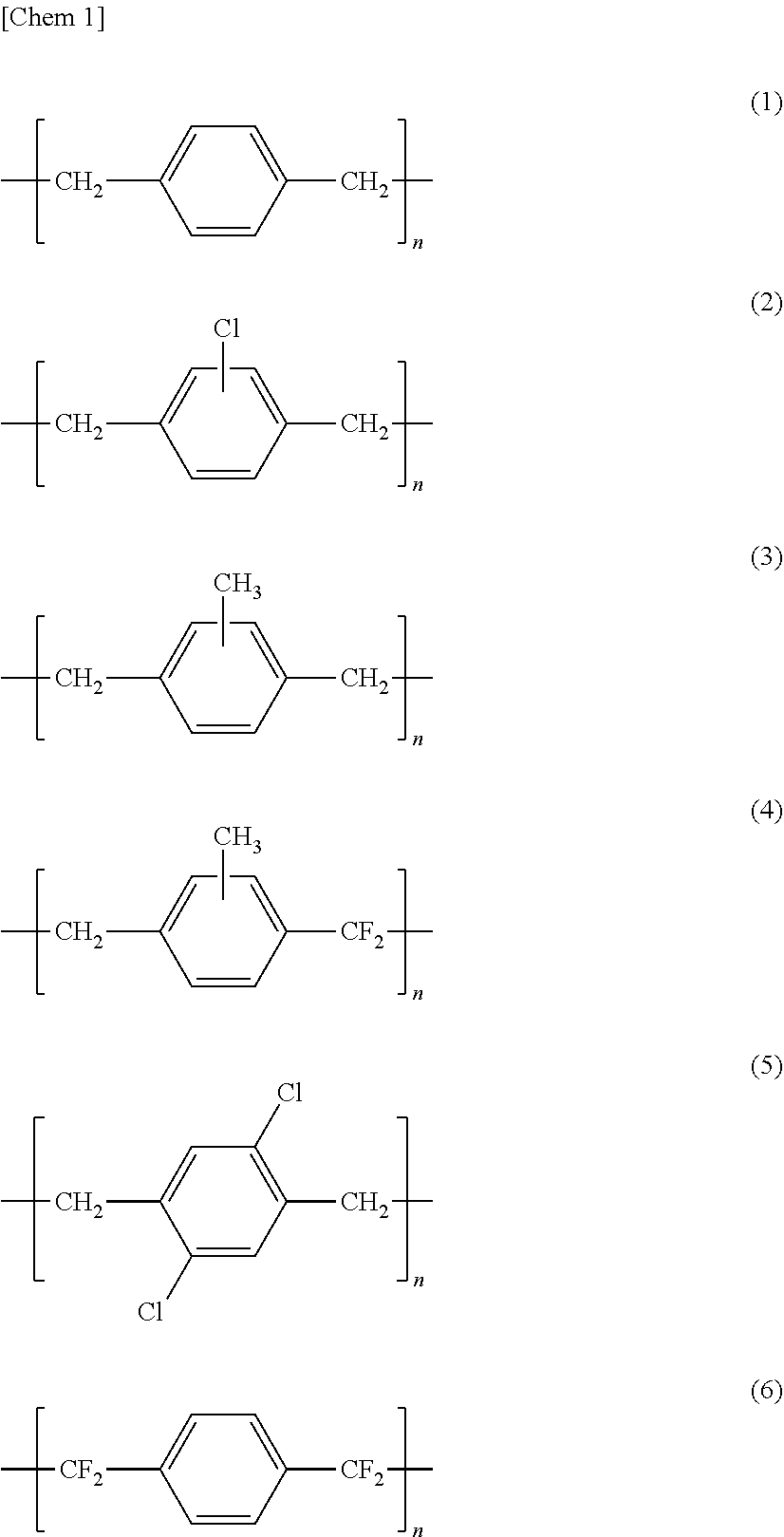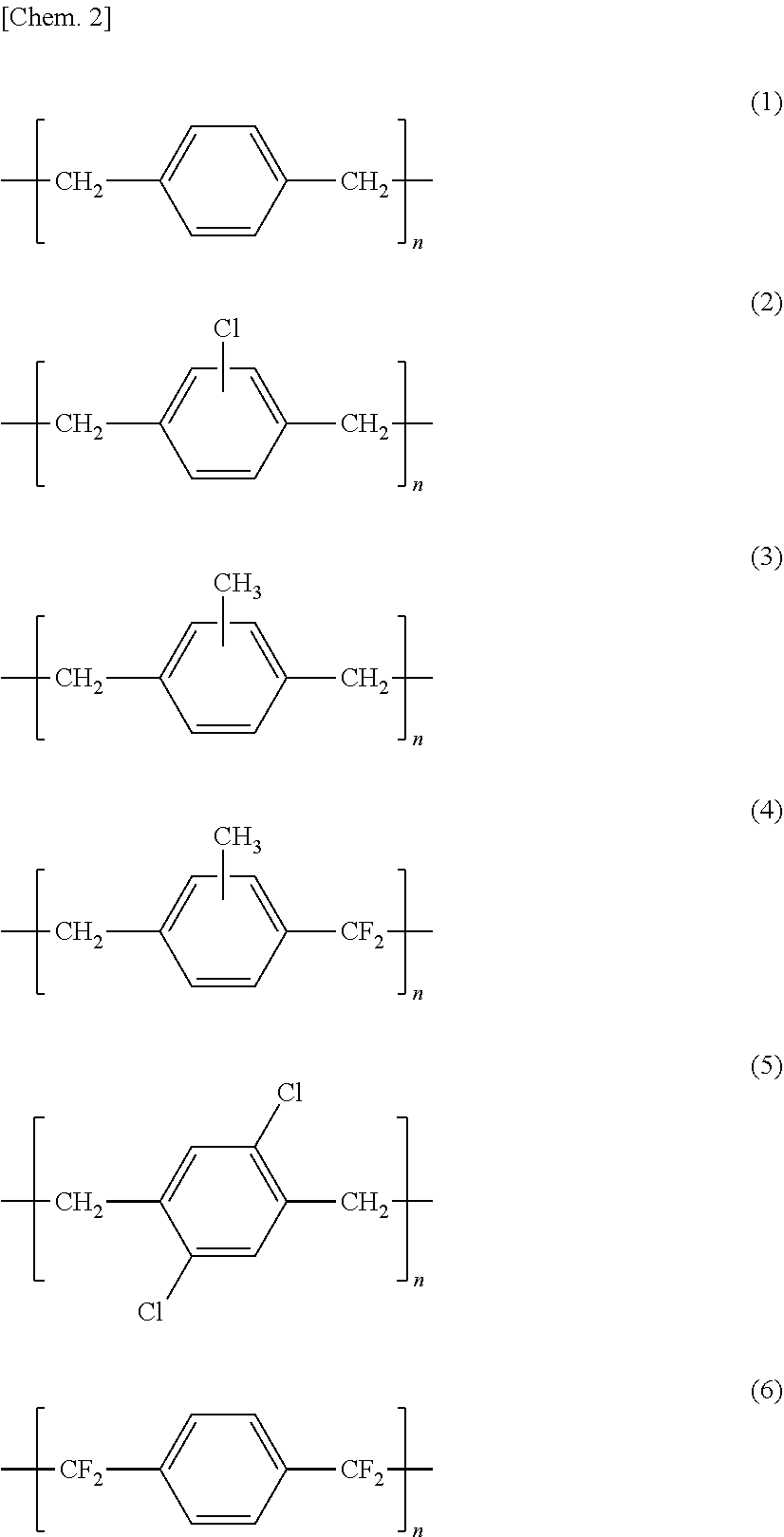Implant for non-luminal area
a non-luminal, implant technology, applied in the direction of prosthesis, surgery, superimposed coating process, etc., can solve the problems of affecting the basic function of the medical instrument, the implant must be removed, and the human body inducing various complications, so as to reduce the influence of the remaining parylene layer on the body, reduce the effect of suppressive elution of magnesium alloy, and reduce the influence of the remaining parylene layer
- Summary
- Abstract
- Description
- Claims
- Application Information
AI Technical Summary
Benefits of technology
Problems solved by technology
Method used
Image
Examples
production examples 1 and 2
[0106]High purity ground metals of Mg, Zn, Mn, and Zr were prepared as raw materials. Respective components were weighted so as to constitute the component concentration shown in Table 1, and were thrown into a crucible, and were molten at 730° C. Each melt was stirred in the crucible, and was cast to form an ingot. Each of the thus-obtained magnesium alloys of Production Examples 1 and 2 was made to have a blending ratio of the main component within the range of the present invention. Rare earth elements and aluminum were not contained in the raw materials even as unavoidable impurities. Magnesium was provided from a magnesium ground metal of purity level of 99.99% with low concentration of impurity Cu, and molten alloy in the crucible were subjected to iron-extraction treatment so as to remove iron and nickel from the molten alloy. Impurity concentrations of the thus obtained samples were measured using an ICP emission spectrometer (AGILENT 720 ICP-OES made by Ag...
production example 3
[0109]High purity ground metals of Mg, Zn, Mn, and Zr were prepared as raw materials. Respective components were weighted so as to constitute the component concentration shown below, and were thrown into a crucible, and were molten at 730° C. Each melt was stirred in the crucible, and was cast to form an ingot. Rare earth elements and aluminum were not contained in the raw materials even as unavoidable impurities.
[0110]Magnesium was provided from a magnesium ground metal of purity level of 99.99% with low concentration of impurity Cu, and molten alloy in the crucible were subjected to iron-extraction treatment so as to remove iron and nickel from the molten alloy.
[0111]Impurity concentrations of the thus obtained ingot were measured using an ICP emission spectrometer (AGILENT 720 ICP-OES made by Agilent Technologies).
[0112]Component concentration (w %) of the obtained ingot was as follows, and the ingot did not contain aluminum and rare earths.
[0113]Mg Remnant, Zn 1.5%, Mn 0.4%, Zr ...
example 1
[0125]The magnesium alloy substrate A with the mirror surface was immersed in a 27M aqueous hydrofluoric acid solution and shaken at 100 rpm. The sample taken out of the solution after 24 hours was thoroughly ultrasonically cleaned with water and acetone, and then dried at 60° C. under reduced pressure for 24 hours. Accordingly, a sample having a magnesium fluoride layer (thickness 1 μm) was obtained. A parylene layer C with a thickness of 500 nm was further formed on the sample by CVD method so as to obtain a sample having a parylene layer on a magnesium fluoride layer.
PUM
| Property | Measurement | Unit |
|---|---|---|
| grain size distribution | aaaaa | aaaaa |
| grain size distribution | aaaaa | aaaaa |
| thickness | aaaaa | aaaaa |
Abstract
Description
Claims
Application Information
 Login to View More
Login to View More - R&D
- Intellectual Property
- Life Sciences
- Materials
- Tech Scout
- Unparalleled Data Quality
- Higher Quality Content
- 60% Fewer Hallucinations
Browse by: Latest US Patents, China's latest patents, Technical Efficacy Thesaurus, Application Domain, Technology Topic, Popular Technical Reports.
© 2025 PatSnap. All rights reserved.Legal|Privacy policy|Modern Slavery Act Transparency Statement|Sitemap|About US| Contact US: help@patsnap.com



